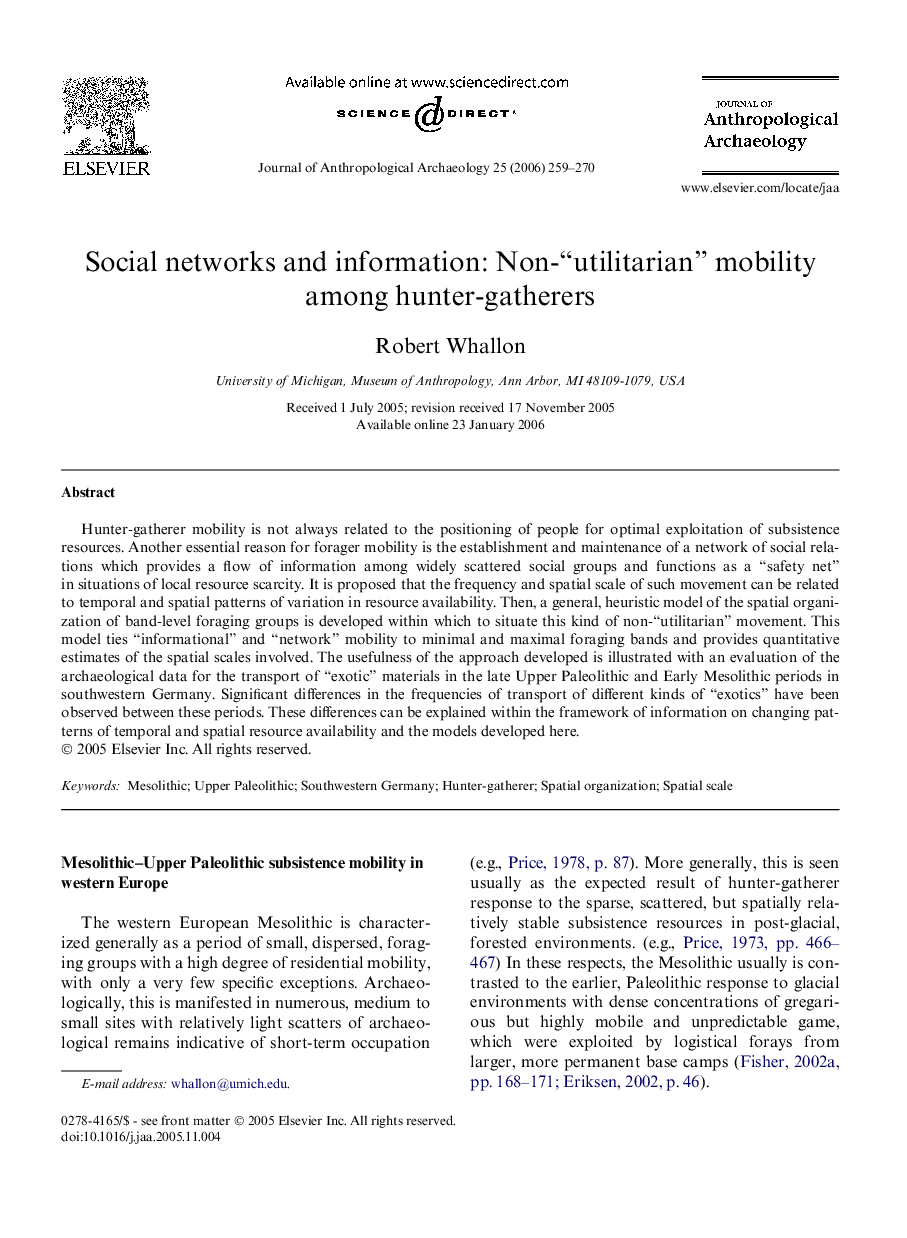| Article ID | Journal | Published Year | Pages | File Type |
|---|---|---|---|---|
| 1035108 | Journal of Anthropological Archaeology | 2006 | 12 Pages |
Hunter-gatherer mobility is not always related to the positioning of people for optimal exploitation of subsistence resources. Another essential reason for forager mobility is the establishment and maintenance of a network of social relations which provides a flow of information among widely scattered social groups and functions as a “safety net” in situations of local resource scarcity. It is proposed that the frequency and spatial scale of such movement can be related to temporal and spatial patterns of variation in resource availability. Then, a general, heuristic model of the spatial organization of band-level foraging groups is developed within which to situate this kind of non-“utilitarian” movement. This model ties “informational” and “network” mobility to minimal and maximal foraging bands and provides quantitative estimates of the spatial scales involved. The usefulness of the approach developed is illustrated with an evaluation of the archaeological data for the transport of “exotic” materials in the late Upper Paleolithic and Early Mesolithic periods in southwestern Germany. Significant differences in the frequencies of transport of different kinds of “exotics” have been observed between these periods. These differences can be explained within the framework of information on changing patterns of temporal and spatial resource availability and the models developed here.
